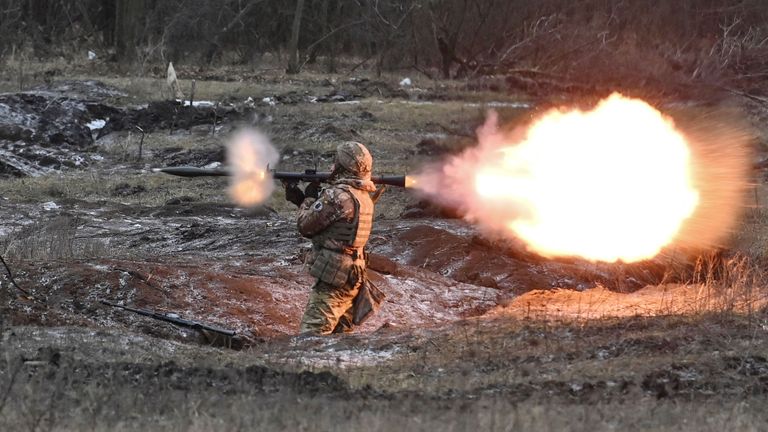The doomsday clock moved 10 seconds ahead of midnight – the closest thing to a global catastrophe ever.
But what exactly does that mean?
While this is only a metaphor for the dangers facing humanity, those who understand the range of risks update the clock.
Experts at the Bulletin of the Atomic Scientists agree on the countdown.
This year’s clock moves forward Due to the “increasing danger of war” Ukraine“.
With nuclear threats, political tensions, climate change and disease on the rise, experts believe this could be a defining moment in history.
The latest update describes 2023 as an “unprecedented and dangerous time”.
What is the Doomsday Clock and how is it set?
The Bulletin of the Atomic Scientists — creators of the clock — first launched the initiative in the 1940s in response to the threat of nuclear war.
After the United States dropped atomic bombs on Hiroshima and Nagasaki at the end of World War II, members of the Bulletin saw a need to help the public understand the scale of the nuclear threat to the survival of humanity.
To this day, the Bulletin Science and Safety Committee, made up of nuclear and climate experts, sets the clock. The committee has done so since 1973, when it succeeded Eugene Rabinowitch, editor of the Bulletin and disarmament activist.
The symbolism of the Doomsday Clock is powerful. If it struck midnight, it would mark the end of time and the theoretical point of human extinction.
Clocks move closer or farther to midnight, depending on how boardroom experts, academic colleagues and the announcement’s sponsors, including 13 Nobel laureates, interpret the global time-specific threat.
read more:
Doomsday clock draws closer to midnight as Ukraine war rages on
Ukraine War – Follow our latest stories
What do the scientists say?
The clock’s latest update is the scariest it’s ever been.
In a statement published by the Bulletin of the Atomic Scientists on Tuesday, its experts said: “RussiaThe thinly veiled threat to use nuclear weapons reminds the world that escalation by accident, deliberation or miscalculation is a dire risk. “
“The potential for a conflict to escape anyone’s control remains high,” the statement added.
The scientists said the war “has increased the risk of nuclear weapons use, raised fears of the use of biological and chemical weapons, hampered the world’s response to climate change, and hampered international efforts to address other global problems.”
The communiqué went on to warn: “The invasion and annexation of Ukrainian territory also violates international norms and may encourage others to take actions that challenge prior understanding and threaten stability.
“In this time of unprecedented global danger, concerted action is required and every second counts.”
How are people reacting on social media?
The Doomsday Clock is not without its critics.
Some say it is an arbitrary act of alarmism masquerading as a more accurate warning.
As Derek Thompson wrote Tuesday: “The doomsday clock is so ridiculous. How can a news organization still treat this falsely precise joke with any kind of reverence? Reporting the results of Groundhog Day with humor.”
However, others are more supportive of the concept. Another Twitter user, @harryhagopian, said the new time made sense to him as he was “increasingly concerned” about global security.
History of the Doomsday Clock
When it was first launched in 1947, the clock was set to seven minutes before midnight.
Artist Martyl Langsdorf came up with the idea for the clock and set the time on the cover of the bulletin to symbolize the danger of nuclear confrontation.
Since then, it’s been ticking as political, nuclear and climate change persist over the years, with pundits revising the time up and down — mostly the approach to midnight and its metaphors for full-blown disaster.
There have been more reassuring years, though. In 1995, the clocks pointed to 14 minutes to midnight, the safest reading in history.
And there have been “positive developments” in some years, such as the Paris climate agreement.
Since 1998, however, the hands of the clock have been pointing to less than 10 minutes past midnight.
In 2020, scientists moved the hands of the clock forward by 100 seconds, after the midnight eruption Coronavirus disease.
The clock remains at 100 seconds until the latest announcement in 2023, bringing humanity 10 seconds closer to a “global catastrophe”, at least in the eyes of some scientists.
